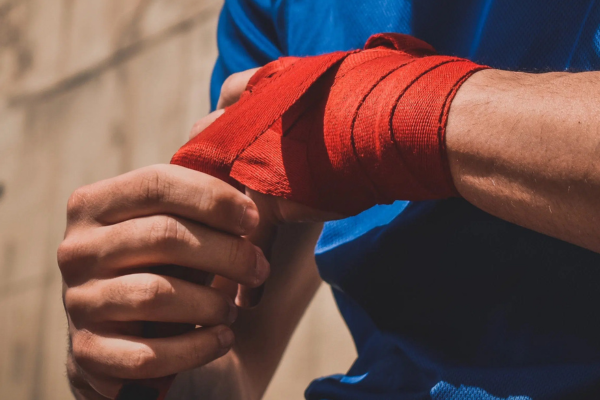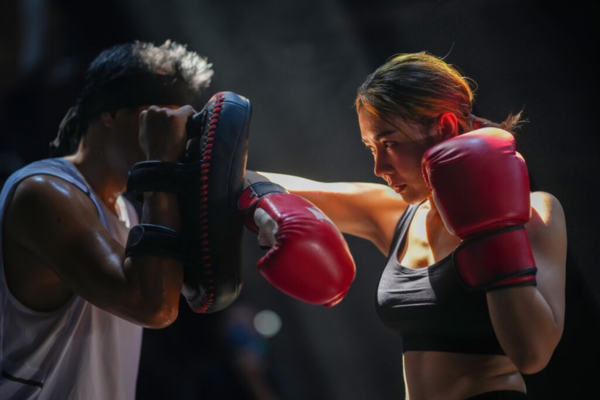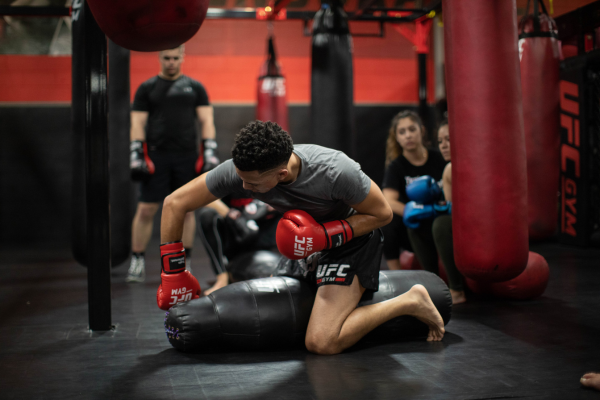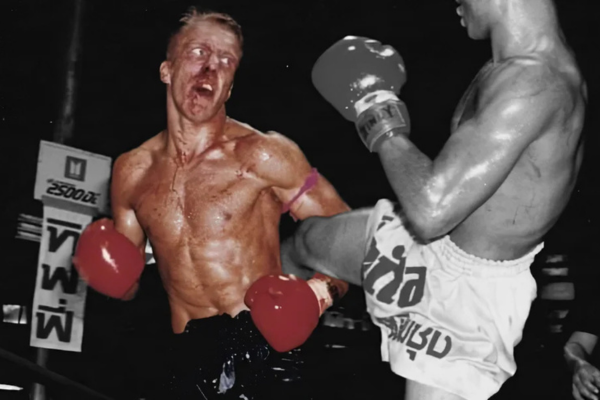Why Every Martial Artist Should Use Wraps

Wraps play a crucial role in preventing injuries during combat sports. By providing proper support and stability, they help protect wrists and hands during intense training and competition. Wrapping wraps helps keep bones and joints in place, reducing the risk of sprains and fractures. Wraps also absorb some of the impact from punches, reducing the pressure on the hands and wrists. This allows fighters to train harder and longer without the risk of serious injury.
Improving performance
In addition to protection, hand wraps also contribute to better performance. They provide comfort and improve grip, which is essential for performing powerful and precise punches. Properly wrapped hand wraps ensure that the hand is firmly and tightly in the glove, which increases the efficiency and power of each strike. This not only increases the effectiveness of the training, but also gives the fighter the confidence to train with full force without worrying about possible injuries. In addition, hand wraps can help to reduce swelling and fatigue in the hands, allowing athletes to train longer and recover faster.
The different types of bandages
Elastic vs. Non-elastic Bandages

Elastic and non-elastic wraps each have their own unique benefits and uses. Elastic wraps, also known as Mexican wraps, are made of a flexible material that conforms to the shape of your hand. This provides a snug and comfortable fit, ideal for long training sessions where maximum support and comfort are required. They are particularly suitable for fighters who require extra flexibility and mobility in their hands.
In contrast, non-elastic wraps, often made from 100% cotton, offer a stiffer, more secure support. They are less flexible but offer a sturdy stability, which can be essential for fighters who need more support for their wrists and knuckles. These wraps are often preferred by traditional boxers who want to maintain a firm and consistent wrapping technique without the wraps moving or shifting too much during training.
Self-adhesive bandages
Self-adhesive bandages are an innovative option that is becoming increasingly popular among martial artists. These bandages are designed with an adhesive that bonds to the material, making them quick and easy to wrap without the need for assistance. They provide a strong and secure fit, reducing the risk of dislodging during intense training. Self-adhesive bandages are particularly useful for athletes who train frequently and want to be able to apply their bandages quickly and efficiently.
Using self-adhesive bandages can also help save time and ensure that the bandages stay tight, regardless of the intensity of the workout. These bandages are usually thinner and lighter than traditional bandages, which can help provide extra comfort and mobility. They are ideal for situations where speed and convenience are important, without sacrificing protection and support.
Step-by-step plan for wrapping bandages
Step 1: Preparation

Before you start wrapping your bandages, proper preparation is essential. Make sure your hands are clean and dry to ensure a secure wrap. Lay out your bandages and make sure they are fully unrolled. This makes it easier to wrap evenly and prevents knots or folds in the material. Start with your hand open and your fingers spread. This ensures that the bandage is not too tight when you close your hand. Choose a comfortable position where you have enough room to move and wrap without restriction. Good preparation lays the foundation for an effective and safe wrapping.
Step 2: Start at the wrist
Begin by wrapping the bandage around your wrist. Place the end of the bandage on the inside of your wrist and wrap it firmly but comfortably a few times. Make sure the bandage is tight enough to provide support, but not so tight that it cuts off circulation. This first wrap will form the base for the rest of the bandage, providing stability and support. It is important to have a firm grip from the beginning to prevent the bandage from coming loose during the rest of the wrapping process.
Step 3: Wrapping the hand and fingers
Once your wrist is securely wrapped, move the wrap to your hand. Wrap the wrap around your palm a few times and then move to each finger, wrapping each finger individually. This will provide extra protection and support for your knuckles and fingers. Make sure the wrap is evenly distributed and that there are no loose pieces that can shift during exercise. This technique helps stabilize the bones and joints in your hand, which is essential for preventing injury and improving overall performance.
Step 4: End at the wrist
Finish wrapping by bringing the bandage back to the wrist. Wrap the remaining length of the bandage tightly around the wrist, ensuring the end is secured using Velcro or another fastening system. It is important to close the wrap properly so that the bandage does not come loose during exercise. Check that the bandage is secure but comfortable, and adjust the tension if necessary to ensure a perfect fit. A well-rounded wrap not only provides protection but also confidence during your workout.
Discover the best bandages at Fightstyle and protect yourself from injuries while improving your performance!
 Nederlands
Nederlands
 English
English
 Deutsch
Deutsch



Leave a comment